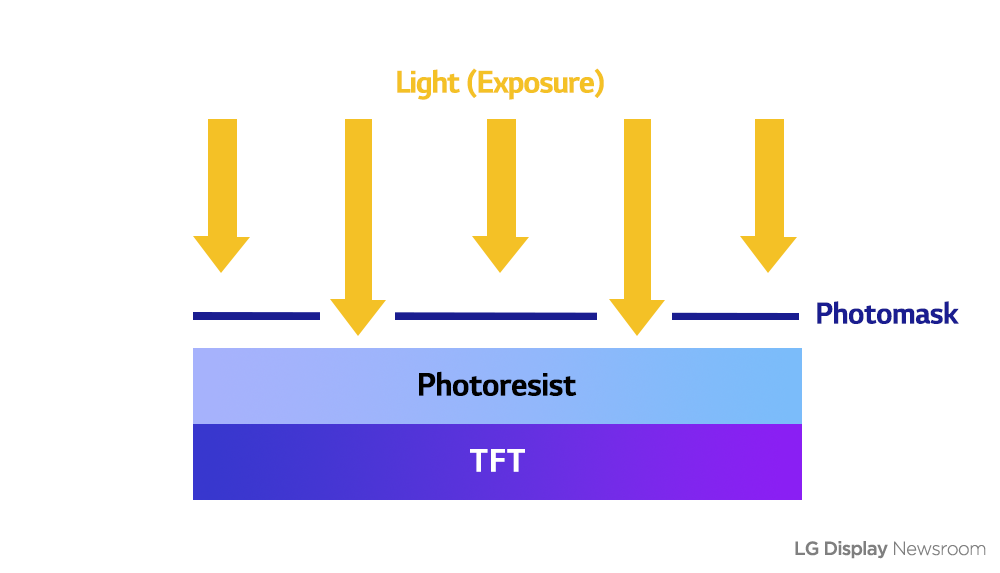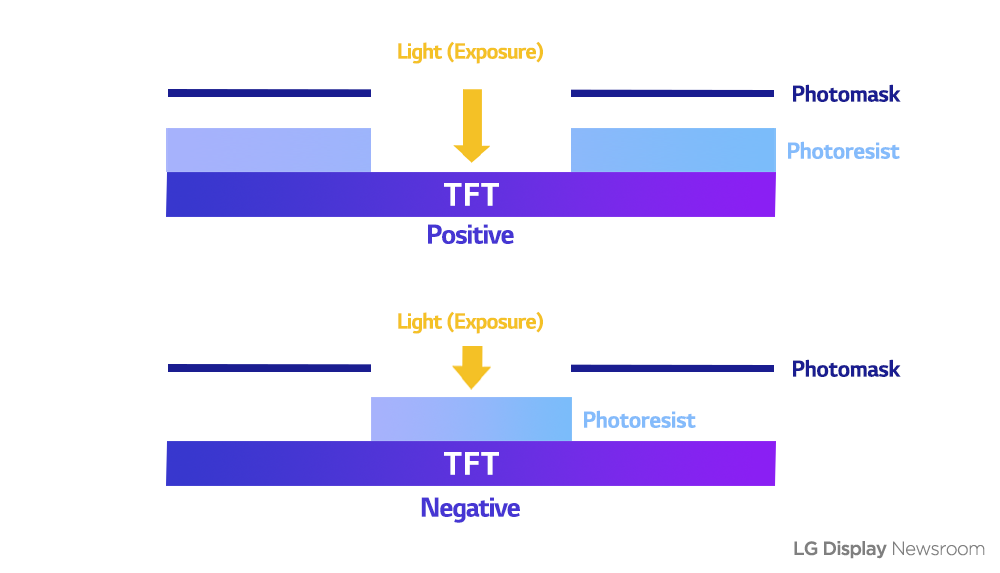DISPLAY 101
#18 Photoresist

| Photoresist: A light-sensitive material that changes its properties during a photolithography process. It is used to create detailed circuits on thin-film transistors. |
Photoresist is crucial to the process of miniaturizing thin-film transistor display circuits. It is used in the step that creates a patterned coating on a surface. It easily hardens or melts when light hits it. Because of this property, photoresist is an essential substance in the process of manufacturing thin-film transistors (TFTs), key semiconductor devices that regulate the pixel brightness of a display. Specifically, photoresist is used in the photolithography process that is necessary to engrave the fine 3D circuit patterns onto TFT substrates.

There are two types of photoresist, based on what happens when light hits the material. When light hits a positive photoresist, the material touched by light is degraded and disappears. When light hits a negative photoresist, it hardens and becomes stronger. The hardened substance then blocks light from hitting the substrate below it. For instance, a flat surface can be coated with a positive photoresist. Then a photomask with a specific design can be laid on top of it, and a light shone on the whole assembly. The light burns away the positive photoresist, leaving some areas of the flat surface uncovered. These areas are then exposed to acid to etch a pattern into the flat surface. After that, the photoresist is removed from the surface. This process can be done several times, each time with a different photomask and either a positive or negative photoresist, to create complex three-dimensional shapes on the surface of the TFT.









